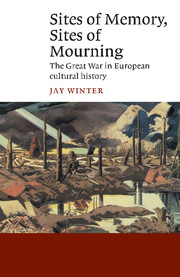Book contents
- Frontmatter
- Contents
- List of illustrations
- Acknowledgements
- List of abbreviations
- Introduction
- I Catastrophe and consolation
- II Cultural codes and languages of mourning
- 5 Mythologies of war: films, popular religion, and the business of the sacred
- 6 The apocalyptic imagination in art: from anticipation to allegory
- 7 The apocalyptic imagination in war literature
- 8 War poetry, romanticism, and the return of the sacred
- 9 Conclusion
- Notes
- Bibliography
- Index
7 - The apocalyptic imagination in war literature
- Frontmatter
- Contents
- List of illustrations
- Acknowledgements
- List of abbreviations
- Introduction
- I Catastrophe and consolation
- II Cultural codes and languages of mourning
- 5 Mythologies of war: films, popular religion, and the business of the sacred
- 6 The apocalyptic imagination in art: from anticipation to allegory
- 7 The apocalyptic imagination in war literature
- 8 War poetry, romanticism, and the return of the sacred
- 9 Conclusion
- Notes
- Bibliography
- Index
Summary
The history of spiritualism and the visual arts suggested some of the ways in which the Great War, however modern in the way it was fought, also triggered an avalanche of the ‘unmodern’. This is clear too in much of the literature produced both by soldiers and non-combatants during the war and in its aftermath. Fiction, memoirs, short stories, and plays reveal a wealth of evidence as to the war's mobilization of motifs and images derived from the classical, romantic, and religious traditions of European literature. One of the most salient instances of the backward-looking character of this body of writing is its use of apocalyptic images. The varied and rich appeal to a traditional eschatology, to a sense of the world coming to an end, shows precisely the opposite. The Great War was, in cultural terms, the last nineteenth-century war, in that it provoked an outpouring of literature touching on an ancient set of beliefs about revelation, divine justice, and the nature of catastrophe.
I centre the discussion on three apocalyptic visions, three Jeremiads, written at almost exactly the same time, during the slaughter of 1916–17 on the Western Front. These texts, as much as others written after the Armistice, show how writers drew deeply on older cultural traditions to express their anguish and their compassion.
- Type
- Chapter
- Information
- Sites of Memory, Sites of MourningThe Great War in European Cultural History, pp. 178 - 203Publisher: Cambridge University PressPrint publication year: 1998

